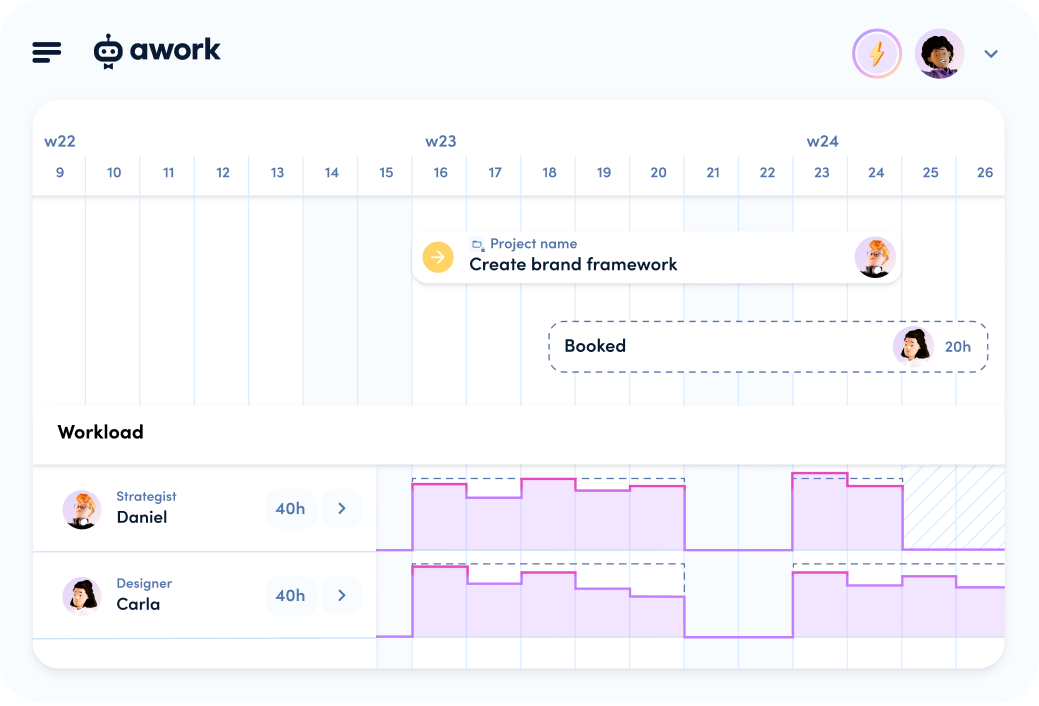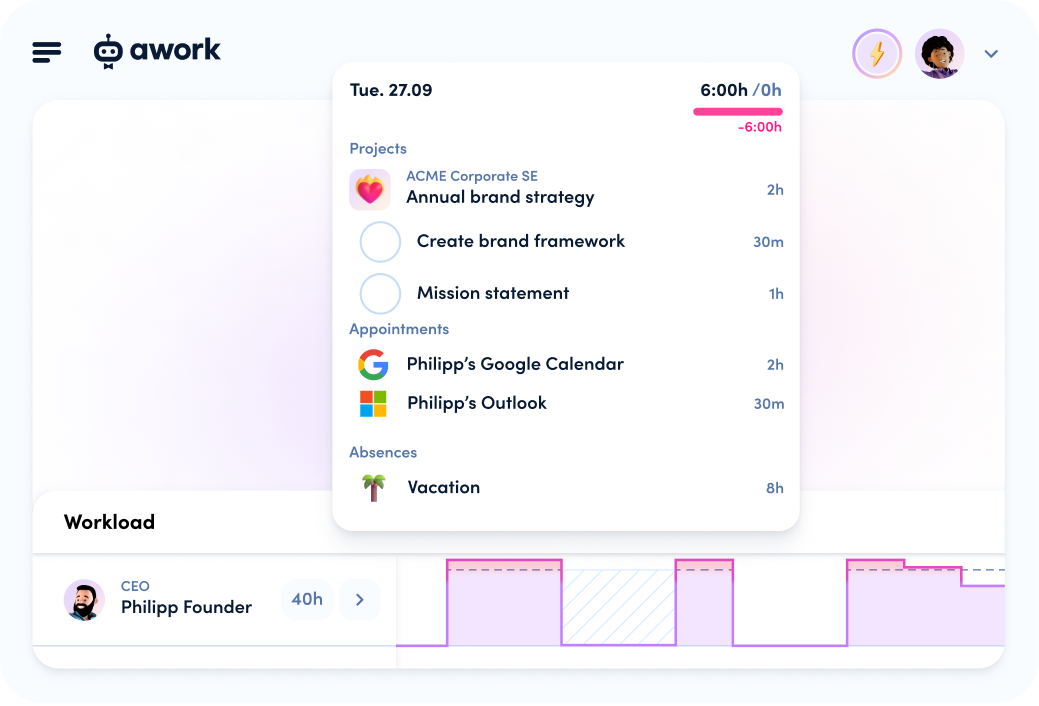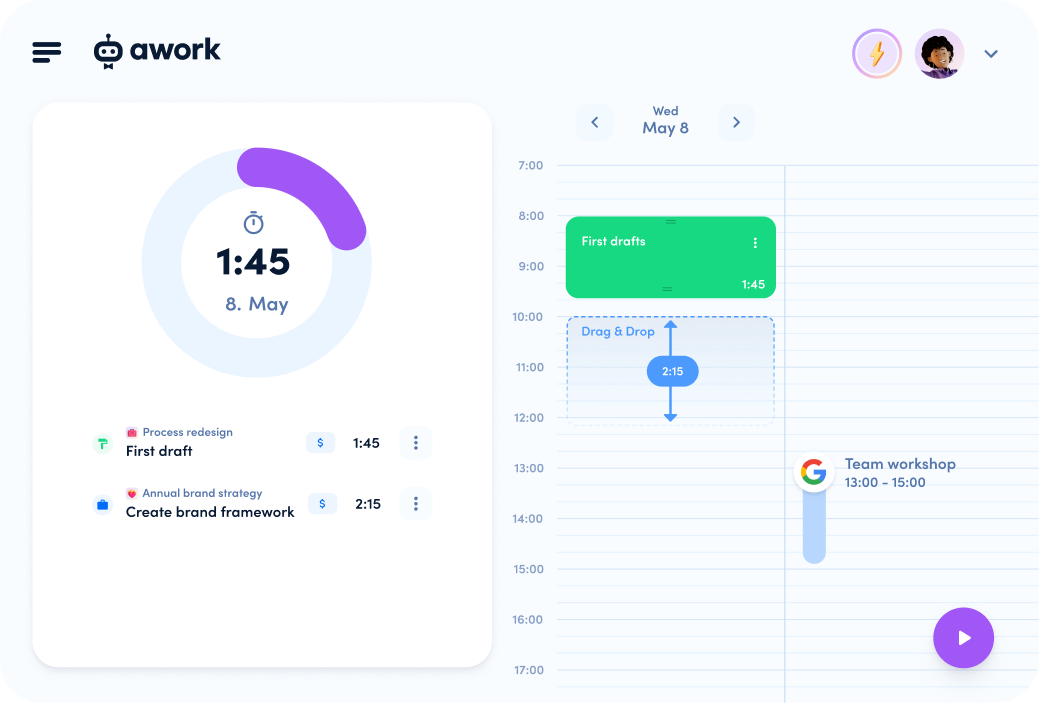Your team members work in different places around the world - some in the office, others in the home office or maybe on the beach or in a café. Your job is to organize the team and motivate them to perform at their best? Sometimes you are sitting in the conference room and sometimes on the sofa at home?
Congratulations, dear teamlead, you are part of the hybrid revolution!💥
But how did we end up here in the first place? Not so long ago, it was unthinkable that teams could collaborate effectively without being in the same room. Offices and fixed workplaces seemed to be the only option, despite computers, email addresses and the Internet. But then the Corona pandemic came along and turned our working world upside down.
Now teams around the world are working hybrid.
Hybrid teams are kind of like an interplay between office cacti and home palms. Anyone with a green thumb knows that cacti and palms need different care. Just like remote teams and office teams, they have different needs. But when they come together in a community bedet or, indeed, a mixed team, new opportunities open up. 🌵🌴
As a leader, you're now challenged to navigate the jungle of hybrid collaboration and create a thriving team culture that caters to the diverse conditions of your team members.

But don't worry, we're by your side. In this article, you'll learn how we at awork overcame the challenges of hybrid collaboration. And get testimonials and tips on how to successfully lead your team and your business into the hybrid future. 🦸
The era of hybrid teams
Since the pandemic, the world of work has taken a big step toward flexibility and freedom. Did you know that hybrid working is now even more common than traditional office work?
According to the Work Happiness Report 2023, more than half of knowledge workers are part of a hybrid team. But why are so many companies, like us at awork, opting for this setup?
Good question, because hybrid work doesn't necessarily make collaboration easier. Nor does it necessarily make it cheaper. Nor does it automatically foster team culture.
Nevertheless, at awork, we firmly believe that hybrid working is the future. Why? Because there are some benefits that we believe outweigh the many challenges of a hybrid team:
- 1️⃣ It gives us access to talent in a much wider range of locations. Imagine being able to work with the best minds around the world, from Rome to Rio! Sounds fantastic, doesn't it?
- 2️⃣ The flexibility of hybrid working offers us a better work-life balance. No more long commutes, but more time for family, hobbies and personal interests.
- 3️⃣ And last but not least, there's the freedom to move around the world. Imagine if you could work on a beach in Bali or in a cozy café in Paris. With hybrid work, it's possible!
Of course, organizing a hybrid team requires a bit more effort. But we think so: It is worth the effort! Because the team is the most valuable asset of a company.

But you might be wondering if hybrid working hurts productivity. The answer is no! Thanks to advanced technologies, tools and processes (of course, we recommend awork for organization 🤗), hybrid teams can achieve top-notch work results.
But: managing hybrid teams also brings pitfalls. Finding the right hybrid culture can sometimes become a real obstacle course. As you read on, I'm sure a hurdle or two will sound familiar.
4 stumbling blocks for hybrid teams
Hybrid collaboration means freedom and flexibility. It means we can trade in the daily hustle and bustle of the office for our comfy sweatpants every now and then. But as leaders, you also have to deal with technical glitches, communication challenges and other pitfalls.
For example, these:
🚫 Trust issues
"People in the home office don't work properly anyway," or "The office crew does coffee klatches half the day anyway" - whichever way you look at it, a lack of trust between office and remote workers is a common problem for hybrid teams.
🚫 Imbalance in communication
Employees in the same room can communicate more quickly in person, potentially giving them informal access to important information and decisions. Remotes may be excluded and feel frustrated and isolated.
🚫 Horror meetings
Remotees sometimes have a hard time actively participating in conversations when the majority of the team is on site and they are overlooked in discussions or technical issues arise.
🚫 Team dynamics.
The lack of regular face-to-face interactions between remote and office employees makes it difficult to build strong team dynamics and a positive work climate.
It's not easy to manage hybrid teams in such a way that all employees, whether on-site or remote, are equally involved. But don't worry, we've got practical tips to help you ensure that the team spirit doesn't suffer as a result of the physical distance. 👇
7 Tips for leaders of hybrid teams
The good news is that hybrid work is purely a culture issue. But it also requires patience and experimentation to find the right methods and processes that fit your team members. The solution is as individual as your own team. Here are a few things we learned while designing our hybrid mode:
1) Set clear guidelines.
Hybrid working only works if the entire team is on board. This requires that leaders understand that hybrid working is ultimately another management tool. And as such, it requires active monitoring, training and: Rules! 👮 Our hybrid policies are part of our Culture Map and are communicated to all new team members during onboarding.
2) Invest a solid infrastructure.
The cornerstone of hybrid team collaboration lies in choosing the right tech stack. So it pays to invest in the right infrastructure.
From our experience, there are four basics we recommend to executives thinking about a decentralized organization (if any of these elements are missing, the hybrid setup probably won't work well):
- A proper 🎥🎤📺 infrastructure in the office.
- A really good communication tool (we use Slack).
- A great tool for organizing projects, tasks, and teams (in our case, of course, awork)
- A tool for knowledge documentation (Notion works for us).

3) Ensure a good meeting experience.
Meetings are an important part of the communication of hybrid teams. Therefore, every meeting must be remotely accessible and comfortable for all participants. In addition to the right technology, consideration plays a major role in this. And this doesn't just apply to people in the office.
At the same time, we encourage our remotes to be considerate of the rest of the team's needs, such as time zones, using good headphones, and creating a quiet environment for meetings.
4) Create face-to-face moments.
No matter how good the technology, face-to-face meetings can't be beat. If it's possible, create opportunities for your team to meet face-to-face. Here's how we do it: All employees who live in and around Hamburg (our home base) are in the office on Thursdays (our team day) and at least one other day a week. This is how we ensure that the office can fulfill its role as awork hub. 📍
Our remotees, who are usually in the home office, come to Hamburg for a week four times a year (we cover the costs).
5) Digitize the office floor
Office crew and remote employees hardly know anything about each other except for first name and/or last name? It's time to create frameworks that change that! We're constantly experimenting and encouraging the use of technology to maintain face-to-face interaction even when we're not working in the same location.
Since the Corona crisis, we've used tools like Donut to enable informal conversations virtually, and Matter to express verbal appreciation in digital form. In addition, we have set up a "Working Out Loud Channel" in Slack, our communication platform, where impressions from the workday are shared - whether from the office or the home office. 💬
6) Make the workload transparent
The biggest threat to team spirit in hybrid teams: a lack of trust. That's why it's even more important to make the workload transparent. In the traditional office, you can simply shout across the desk how busy your colleagues are. But if you can't see what others are doing, digital solutions are needed to provide a 💬 - without having to pick up the phone every time.
We use awork ourselves, of course, so that all team members can see capacities and progress in order to better plan projects together.

7) Build trust through time tracking
To build trust in hybrid teams, time tracking can help. This may sound paradoxical at first, as time tracking is often associated with control. But preconceptions that remote workers are not productive can put a strain on team culture. Transparent time tracking allows all team members to see how much time they're spending on work, regardless of whether they're working in a home office, at the beach or in the office.
And this transparency creates trust - the key to success in hybrid teams. ⏱

Office + Remote = 💜
With these seven tips and our real-world experience, you'll be well equipped as a leader to create a harmonious and productive work environment that benefits everyone.
Trust the right tools, use the appropriate strategies, and be courageous and patient. That way, you and your team can overcome the challenges of hybrid collaboration and develop an unbeatable team culture that endures across physical boundaries.
At awork, we have great team members all over the world thanks to our hybrid way of working. But still, Hamburg is our central anchor point for our team culture. We meet here regularly and it feels a bit like coming home every time. 🥰

How awork supports your hybrid team
Leading a hybrid team successfully is based on the right tool stack. awork is the work management tool - perfect for hybrid teams and developed by a hybrid team. 😉
Whether you want to organize projects, plan capacities or record times - awork adapts to your way of working and supports you as a leader to manage your team in the best possible way. No matter where you are at the moment. 🤞

Want to know how exactly awork can help you organize your team? Just get in touch right here. 🤗























